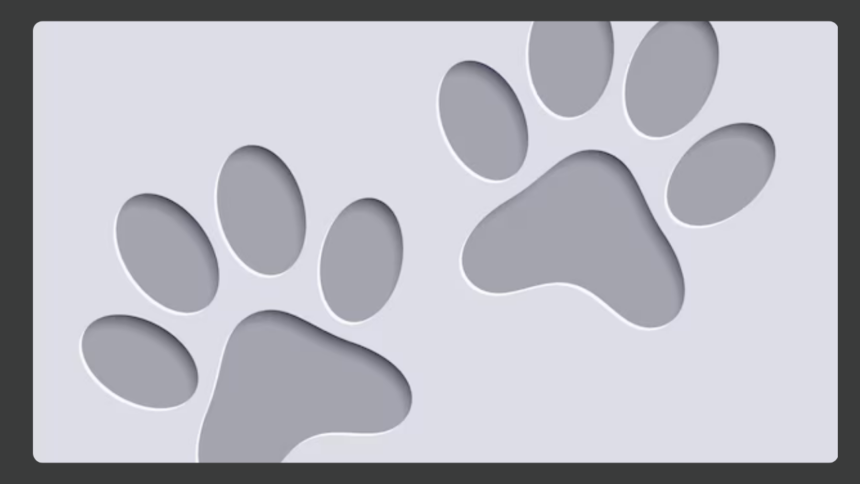In the vast world of emojis, the paw emoji stands out as one of the most endearing and versatile symbols. Whether you’re a pet lover or simply enjoy adding a playful touch to your messages, the paw emoji brings a sense of warmth and affection to digital conversations. But what is the true meaning behind this cute symbol? Let’s dive into the paw emoji and explore how it’s used, its different variations, and why it has become so popular in online communication.
History and Evolution of Emojis
Emojis have come a long way since their inception. Initially introduced in the late 1990s by Japanese telecommunications companies, emojis have evolved from simple smiley faces and basic symbols into a language of their own. With thousands of emojis available today, they play an integral role in our daily communication, often adding emotional depth and personality to texts.
The paw emoji, specifically, taps into our universal love for animals, making it a favorite among pet owners, animal lovers, and even brands looking to promote their pet-related products.
What Does the Paw Emoji Represent?
At its core, the paw emoji represents an animal’s paw print, often associated with pets like cats and dogs. However, the symbol is not limited to these creatures; it can also symbolize wild animals, love for animals, or even a fun, carefree attitude. It’s a small yet powerful emoji that can express affection, admiration for animals, or simply add a playful tone to your message.
Types of Paw Emojis
Though the general paw emoji is common, different variations exist across platforms and can represent various animals. Let’s explore a few of these:
Cat Paw Emoji
This variation often features a softer, more rounded paw print, reminiscent of a cat’s delicate steps. It’s popular among cat lovers and often used when talking about feline friends or showing affection for kitties.
Dog Paw Emoji
The dog paw emoji is a bit more rugged, reflecting the sturdy paws of our canine companions. It’s perfect for dog owners, those discussing dogs, or simply to express love for animals in general.
Other Animal Paw Emojis
Though not as common, there are variations that hint at other animals like bears or foxes. These versions are less specific but still convey a love for the wild side of nature.
How to Use the Paw Emoji in Texts
The paw emoji’s flexibility allows it to be used in numerous contexts. Here are a few ways you can use this fun symbol in everyday communication:
Casual Conversations
Most commonly, the paw emoji is used in light-hearted, casual conversations. Whether you’re texting a friend about your pet or simply want to express affection, the paw emoji fits perfectly.
Formal Settings
While emojis are often considered informal, the paw emoji can still be used sparingly in professional settings, particularly in pet-related businesses. For example, a pet store sending promotional emails or social media posts might incorporate the paw emoji to align with their brand identity.
The Paw Emoji in Social Media
Paw emojis are frequently used across various social media platforms. Let’s look at how they shine in different digital spaces:
Animal influencers and pet-related content on Instagram are often decorated with paw emojis. You’ll find this symbol in captions, comments, and even stories, showcasing pets and animal-related content.
Twitter users, especially animal advocacy groups, frequently use the paw emoji to raise awareness about animal rights, pet adoptions, and similar causes. It’s a quick and easy way to communicate a love for animals in short tweets.
On Facebook, the paw emoji is common in posts about pets, lost and found animal alerts, and groups dedicated to animal lovers. It’s a friendly, accessible way to connect people who share a passion for pets.
Paw Emoji in Digital Marketing
In the world of digital marketing, the paw emoji is a popular tool for pet stores, animal shelters, and even veterinary clinics. It adds a touch of playfulness and can make a brand more relatable, especially for animal lovers. By incorporating the paw emoji, businesses can quickly communicate their connection to the pet world, making their promotions more engaging.
Paw Emoji in Popular Culture
Popular culture is brimming with references to animals, so it’s no surprise that the paw emoji finds its way into celebrity posts, movie promotions, and even meme culture. It’s a universal symbol that instantly resonates with audiences, making it a staple in pop culture.
Why People Love Using the Paw Emoji
So, why do people love the paw emoji so much? It’s simple – it’s cute, it’s playful, and it resonates with our love for animals. Emojis add personality to texts, and the paw emoji, in particular, adds warmth and friendliness. It’s a reminder of the pets we cherish or the animals we admire in the wild.
Psychological Impact of Emojis in Communication
Emojis like the paw symbol can enhance emotional communication, helping people convey feelings that might be harder to express through words alone. Studies suggest that emojis can trigger positive emotions, making digital conversations more engaging and heartfelt.
The Role of Paw Emojis in Pet Communities
In online pet communities, paw emojis serve as a badge of identity. Whether discussing pet care tips, sharing photos of pets, or organizing rescue efforts, the paw emoji helps build connections among animal lovers, fostering a sense of belonging.
Paw Emojis Across Different Platforms
Different platforms often have slight variations in how emojis appear. Here’s how the paw emoji looks across popular devices:
iOS
On iOS devices, the paw emoji has a clean, polished design, often resembling the paw print of a domestic pet.
Android
Android’s paw emoji is similar but sometimes appears slightly bolder, depending on the device’s software version.
Windows
Windows has a more basic version of the paw emoji, often lacking the detailed shading seen in other platforms.
Combining Paw Emojis with Other Emojis
A fun way to use the paw emoji is to pair it with other emojis. For instance, pairing it with a heart emoji can express love for animals, while adding a smiley face or pet-related emoji (like a dog or cat) can make your message even more dynamic.
Common Misuses of the Paw Emoji
While the paw emoji is versatile, it’s important to use it in the right context. Some users mistakenly use it in conversations unrelated to animals or pets, which can confuse the message. Stick to contexts where animals or affection are the primary focus to avoid miscommunication.
FAQs
What is the meaning of the paw emoji?
The paw emoji typically represents a pet’s paw print, often associated with affection for animals like cats or dogs.
Can I use the paw emoji in professional settings?
Yes, but it’s best used in industries related to pets, such as veterinary clinics or pet stores.
Why is the paw emoji popular on social media?
It’s popular because it’s cute and instantly recognizable, often used by pet lovers or businesses related to animals.
How does the paw emoji differ across platforms?
Slight variations in design exist depending on the platform, such as iOS, Android, or Windows, but the core image remains similar.
Can I combine the paw emoji with other emojis?
Absolutely! It’s common to combine the paw emoji with hearts, pets, or smiley faces to enhance your message.
Conclusion
The paw emoji, though small, holds a powerful place in digital communication, especially for animal lovers. Its charm lies in its simplicity, instantly evoking warmth, affection, and a shared love for pets. Whether you’re texting a friend, posting on social media, or promoting a pet-related business, the paw emoji adds a playful and personal touch to your message. Its versatility allows it to fit in various contexts, from lighthearted chats to branding and marketing strategies. As our love for animals continues to thrive online, the paw emoji will undoubtedly remain a symbol of connection, loyalty, and affection. Whether paired with other emojis or standing alone, it’s a fun and meaningful way to express care and admiration for the animals that enrich our lives.
Stay in touch for more updates and alerts visit: eightsleep!









